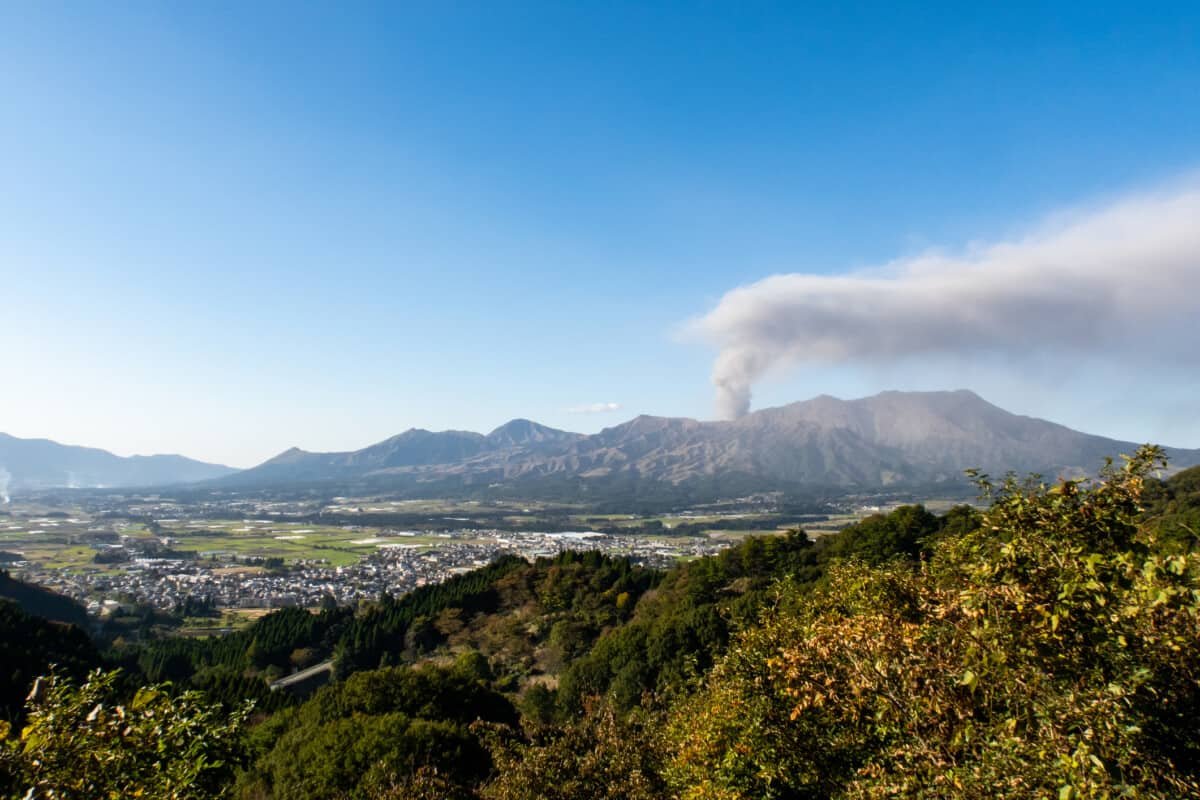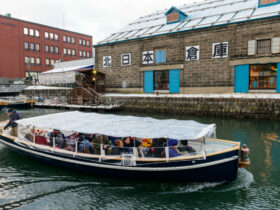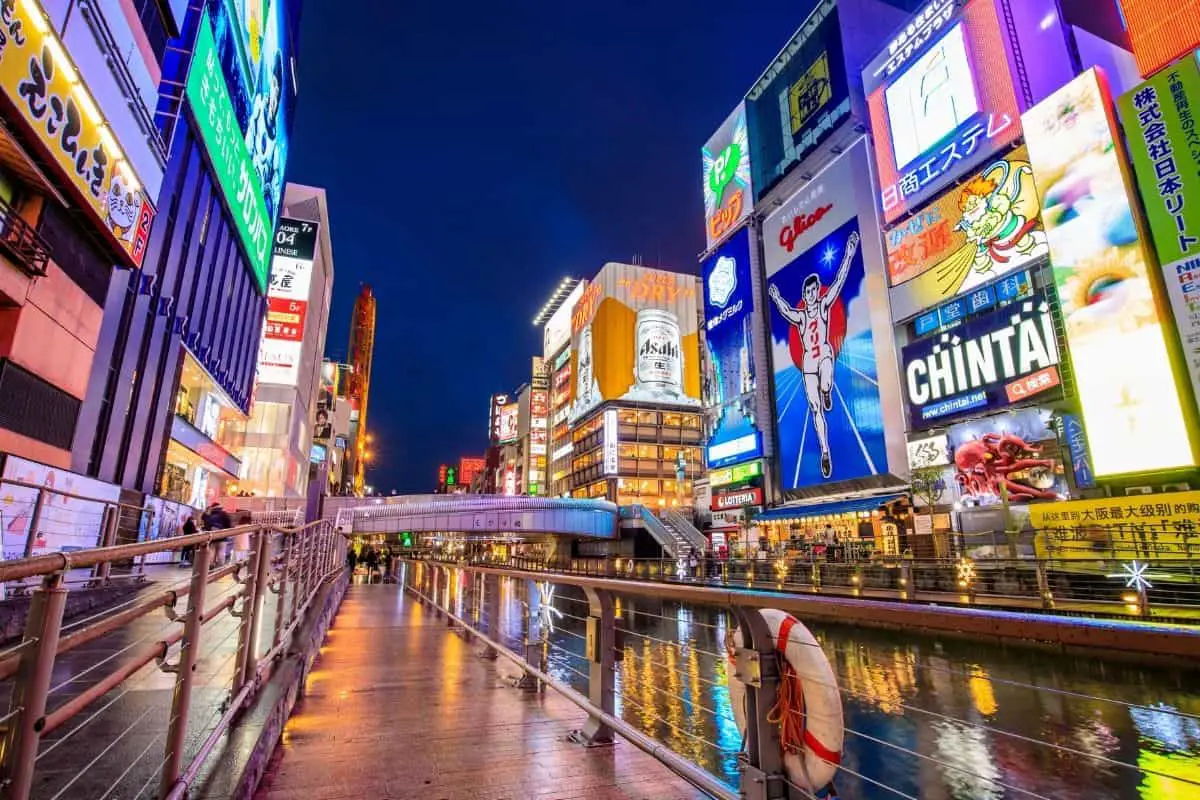Japan is home to approximately 111 active volcanoes. Mount Aso is Japan’s largest active volcano and one of the biggest in the world. As an important part of the Japanese landscape, history, and culture, no trip to Japan is complete without a visit to one of its awe-inspiring volcanoes.
Why not add Mount Aso to your ‘things to do and see’ list for your upcoming trip? You’ll experience one of Japan’s most spectacular natural wonders, and also have the chance to get up close to an active volcanic crater with its gaseous vents.
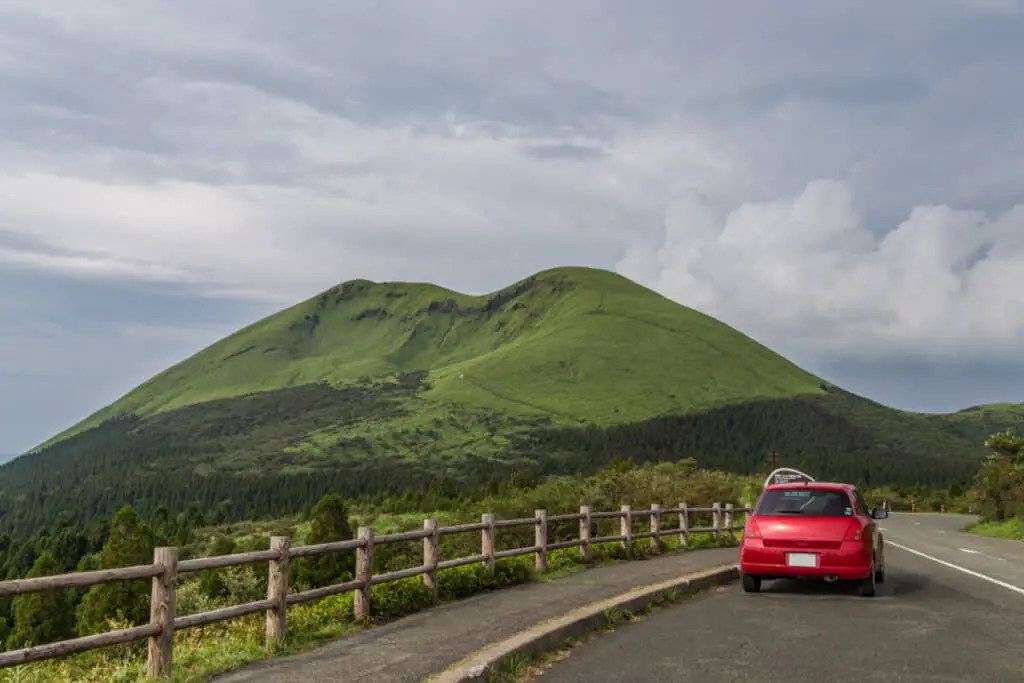
What is Mount Aso?
Mount Aso (阿蘇山, Aso-san in Japanese) is located in the Aso Kujū National Park, right in the heart of Japan’s third-largest island, Kyushu. It stands 2,533 feet (1,592 meters) above sea level and, thanks to its massive caldera and multiple volcanic cones, it is known as Japan’s largest active volcano.
Its circumference is around 75 miles (120 kilometers) and it has a 16-mile (25 kilometers) diameter from north to south and an 11-mile (18 kilometers) diameter from east to west.
The caldera is not an open crater, but rather a series of five active volcanic peaks including Mount Neko, Mount Taka, Mount Naka-dake, Mount Eboshi, and Mount Kishma. The highest point is the top of Mount Taka.
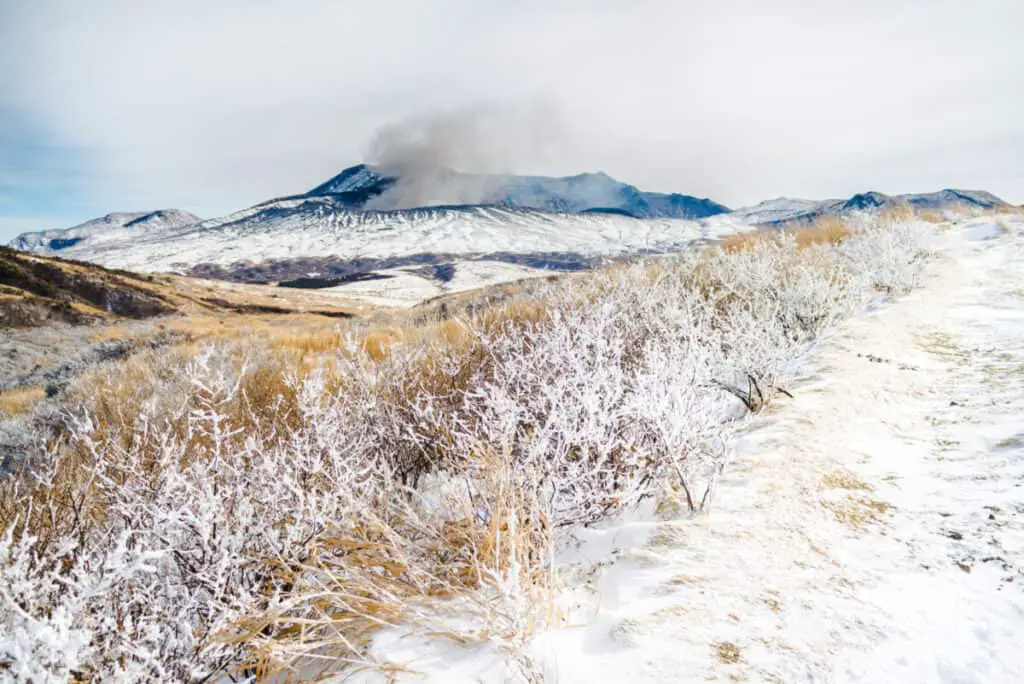
The Aso Caldera has formed sometime between 90,000 and 300,000 years ago and it is so large that it comfortably fits the city of Aso and nearby towns of Takamori and Minamiaso within its perimeter!
Although Mount Aso experiences heavy snowfalls in winter, it actually experiences a humid climate, with warm summers and cold but mild winters.
If you want to visit during the months of June and July, make sure to bring an umbrella and rain jacket as these months usually experience 200 inches (500 millimeters) of rain.
What is an active volcano?
A volcano is a fissure in the Earth’s crust that is usually caused near where tectonic plates touch and bump into each other. They allow volcanic ash, steaming hot lava, and toxic gases to escape into the Earth’s atmosphere from the magma chamber below.
Volcanoes are classified as either active, dormant, or extinct.
Active volcanoes
Volcanologists struggle to achieve a consensus on what ‘active’ means because a volcano’s lifespan can be anything from a couple of months to several million years. These long spans of time are difficult to quantify against a human lifetime or even the whole of recorded human history!
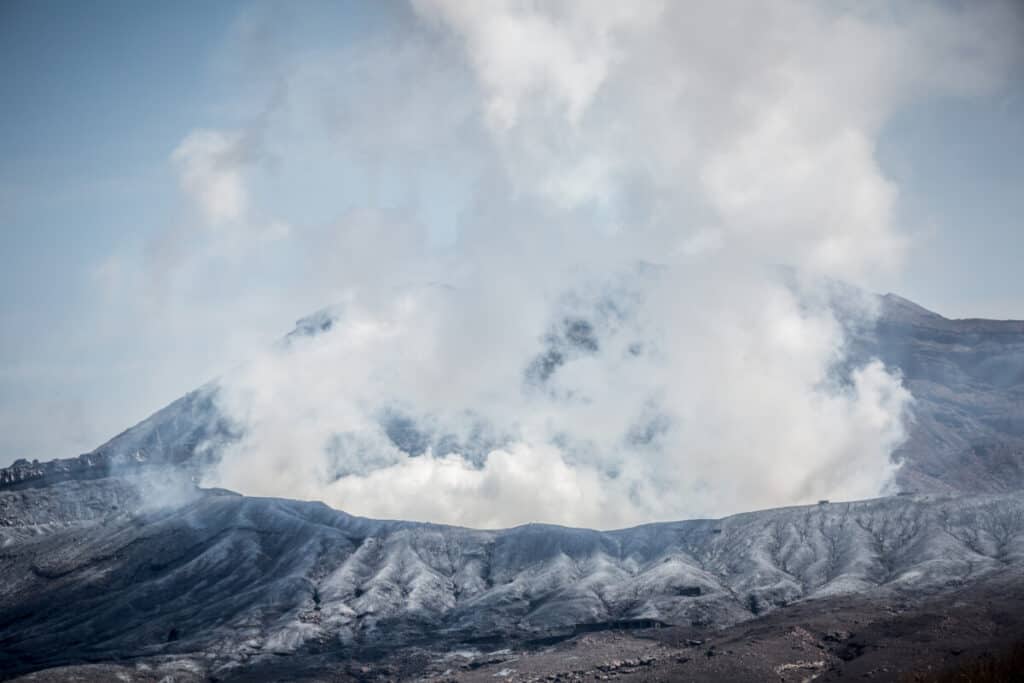
In human terms, a volcano that has not erupted for millions of years might be considered inactive. However, for a volcano, it might not. For these reasons, some scientists consider most volcanoes to be active.
Dormant volcanoes
Although it is hard to identify the differences between active and dormant (or inactive) volcanoes, a simple definition would be that dormant volcanoes have not erupted for several thousand years but are likely to erupt in the future.
Volcanologists will sometimes classify a volcano to be inactive if there are no written records of it ever erupting. However, as volcanoes can exist for several million years, this is not a particularly accurate way to define an inactive volcano.
Extinct volcanoes
Scientists have more confidence labeling volcanoes as extinct because they can measure whether it is still supplied by an underground magma chamber.
The History of Mount Asa Volcano
The caldera as you see it today was formed by an eruption around 300,000 years ago. Between 300,000 and 90,000 years ago, four massive eruptions emitted huge plumes of volcanic ash and spills of pyroclastic magma flow that covered much of the landscape around Mount Aso.
As the chamber collapsed, the caldera was formed. The fourth and last eruption was the biggest, and the ash that spewed out would have blanketed the whole of the Kyushu area.
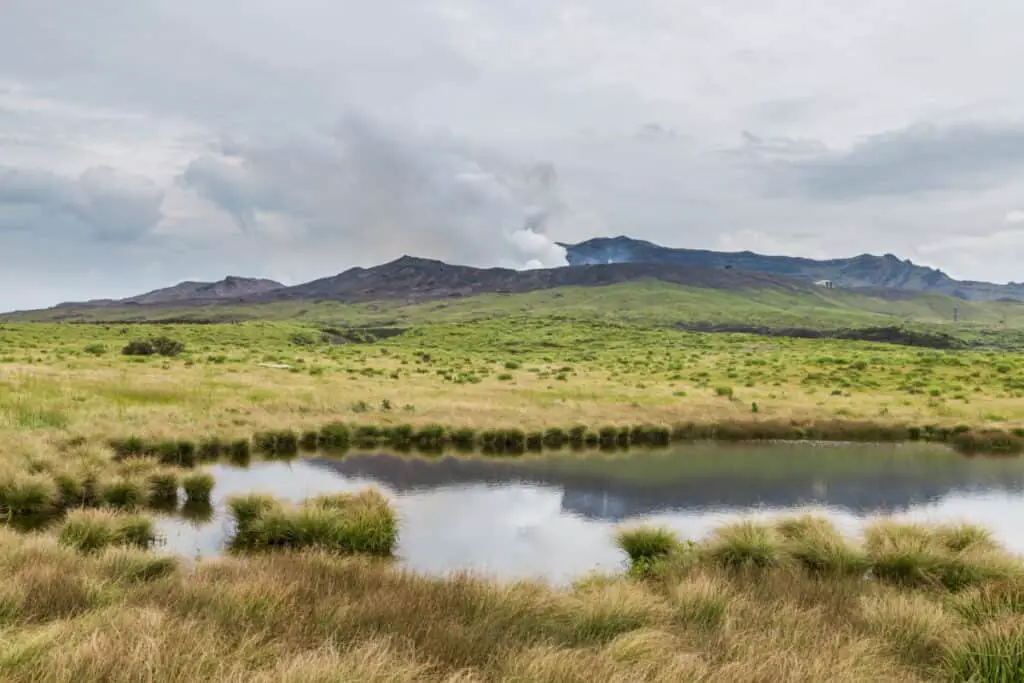
The cones of Mount Taka, Mount Naka, Mount Eboshi, and Mount Kishima were formed during the fourth eruption, but Mount Neko was formed sometime beforehand, although scientists are not sure exactly when.
Today, the only active cone at Mount Aso is Mount Naka.
Many of the 350 stone bridges in the Kumamoto Prefecture were built with basalt stone that originated from Mount Aso. Two of the more significant are the Tsujun-kyo and Reitai-kyo bridges on the Midorikawa River.
How close can I get to Mount Aso?
Mount Aso is an active volcano and the northernmost crater has been active for the past 70 years. Mount Naka, which you can normally reach by road, continuously emits smoke and, on occasion, will erupt with small magma flows.
As of February 2022, the authorities are enacting a no-entry zone that stretches a one-kilometer radius from Mount Aso’s crater.
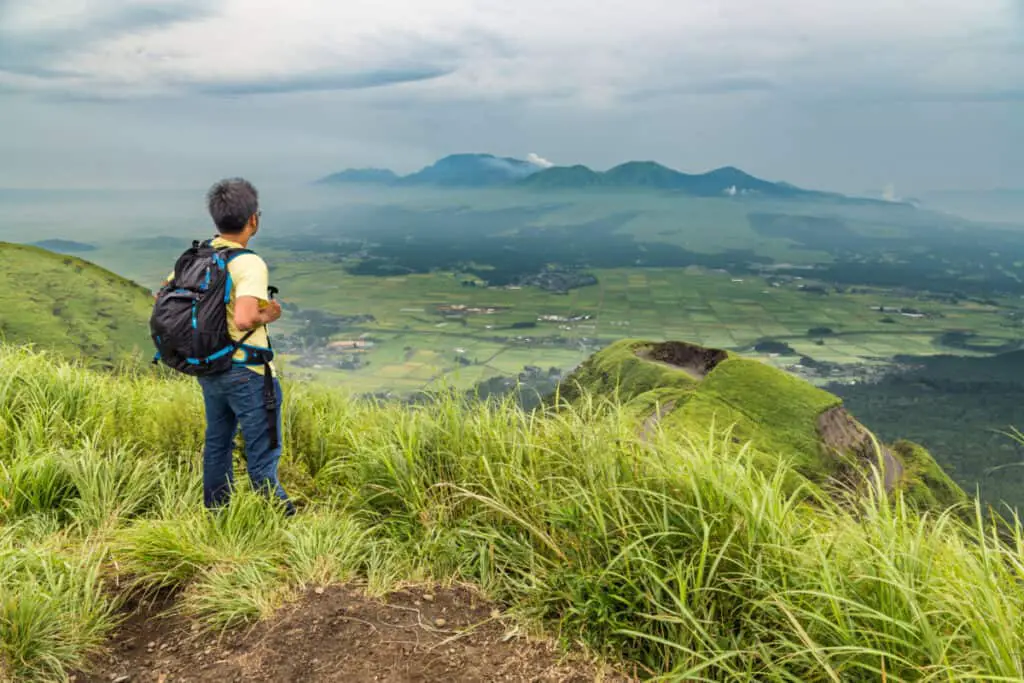
This means that unless the authorities change the entry status to Mount Aso, you cannot access the crater, even from a viewing platform, or enjoy any of the nearby hiking trails.
Simply put, the risks are too great: you might be subjected to poisonous volcanic gases, unseasonably dangerous weather, or dangerous volcanic activity.
Before you decide to visit, look up information about the volcano’s current state before you head out, for it might not be open or areas may have restrictions.
If you suffer from respiratory problems such as asthma or are suffering from a cold, it is also a good idea to keep your distance from the caldera.
How do I get to Mount Aso?
You can catch a bus from the Japan Railways Aso Station and it will take between 30 to 40 minutes to reach the Naka-dake Crater. Make sure to check the timetable, as the bus leaves every one to two hours. You will have to pay around 650 yen and it is not covered by the Japan Rail Pass.
If you’re traveling by car, you can park at the parking lot next to the crater, but you will need to pay 800 yen to drive the last section of the road.
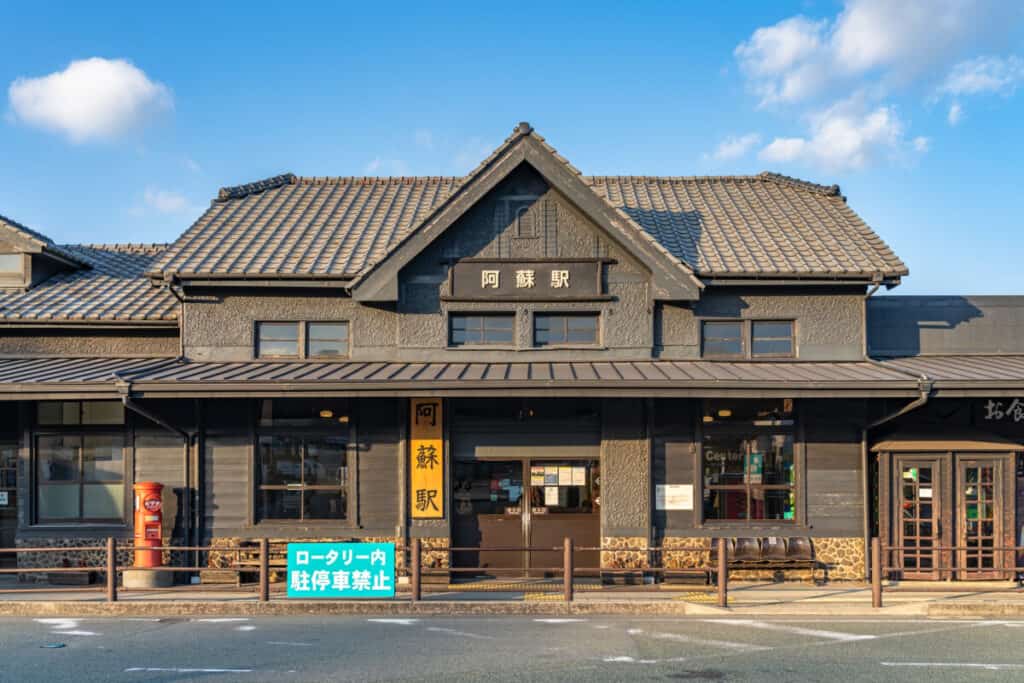
When is Mount Aso open?
If Mount Aso is safe to visit, it is open from 9 am to 5 pm, but is sometimes closed for maintenance. You will need to pay 850 yen to enter.
What are the highlights of a trip to Mount Aso?
Getting the perfect photograph
If you’re lucky enough to visit Mount Aso when the caldera is steaming, you have any number of vantage points to get a stunning photograph, such as Komatate-yama Hill, Mount Kishima, and Takaoka.
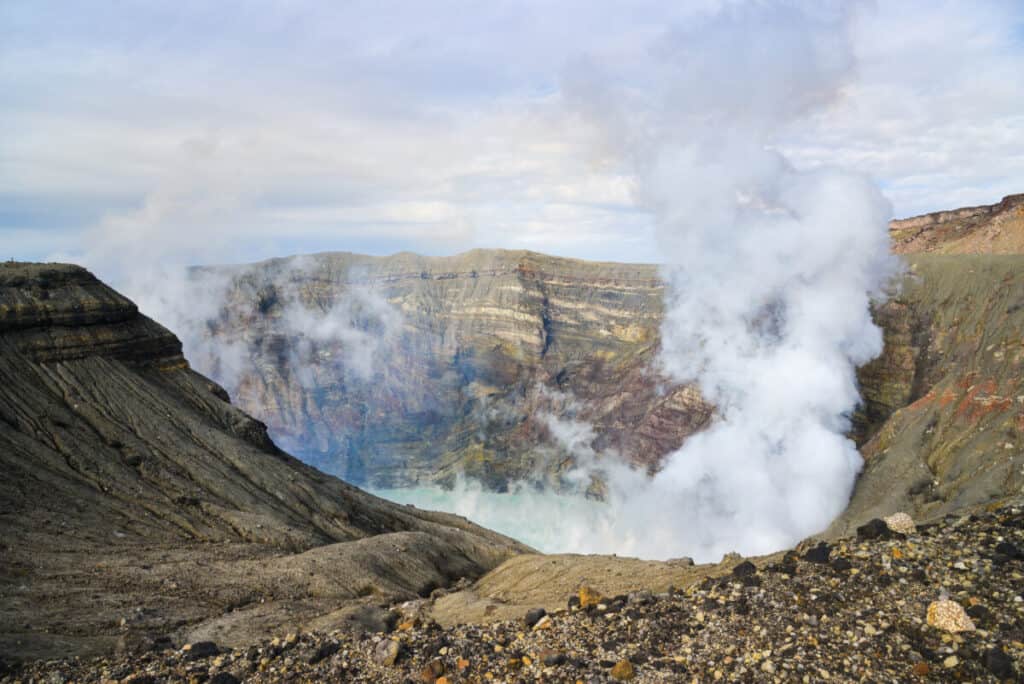
Soaking it up in an onsen (hot spring)
As this is a volcanic landscape, the area has several hot springs that you use to soak up the mountain atmosphere.
Onsens In The Mount Aso Area Via ANA
Pay your respects at the Aso Shrine
The Shinto shrine on Mount Aso is one of the oldest in Japan and it holds several Important Cultural Properties including the Ichi-no-shinden (一の神殿), Ni-no-shinden (二の神殿), and Rōmon (楼門).
Sadly, the shrine’s tower gate and worshipping hall collapsed in the 2016 Kumamoto earthquakes.
Aso Shrine Via Explore Kumamoto
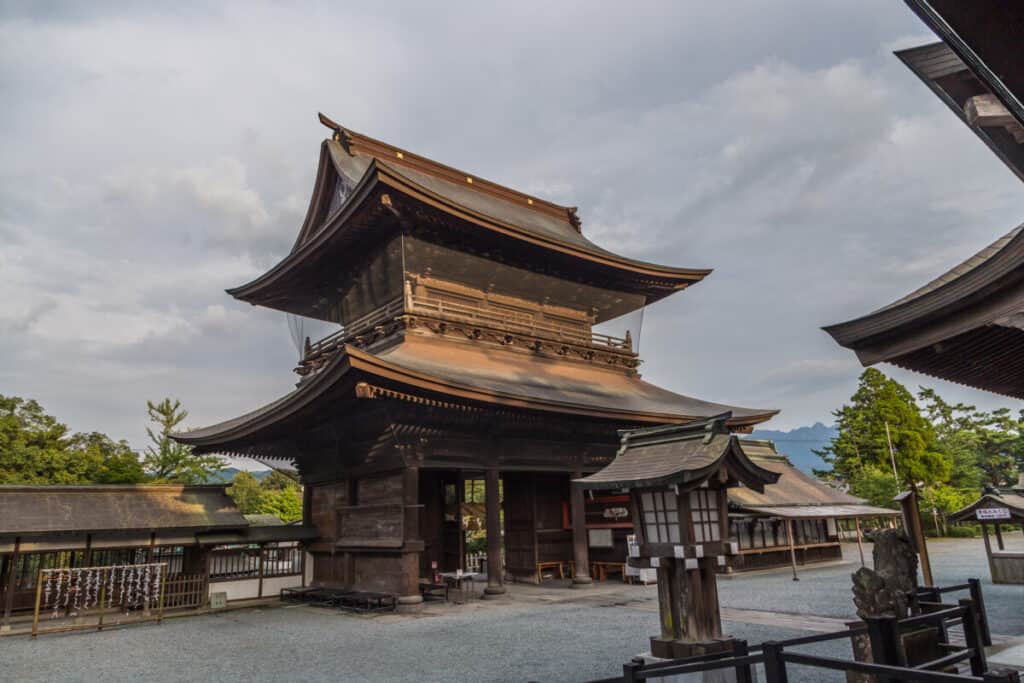
Aso Volcano Museum
The Aso Volcano Museum, which is located in the region of Kusasenri in Aso City, is the place for everything you need to know about volcanoes in general and Mount Aso in particular.
Aso Volcano Museum Official Website
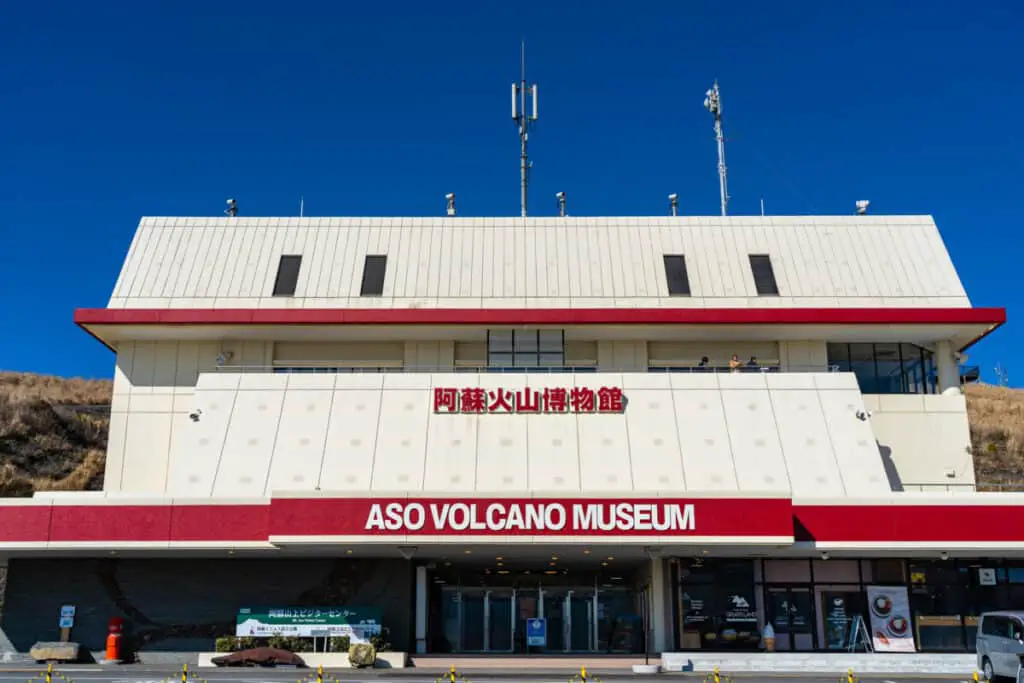
Enjoy the beauty of Kusasenri
You can find horses and cows grazing on the grass-covered plains of Kusasenri. If you want a ride, you can enjoy the scenery from the back of a horse.
They are available to rent from early March to mid-December and are only a short distance from Naka-dake crater.
Horseback Riding Near Aso Via Japan National Tourism Organization
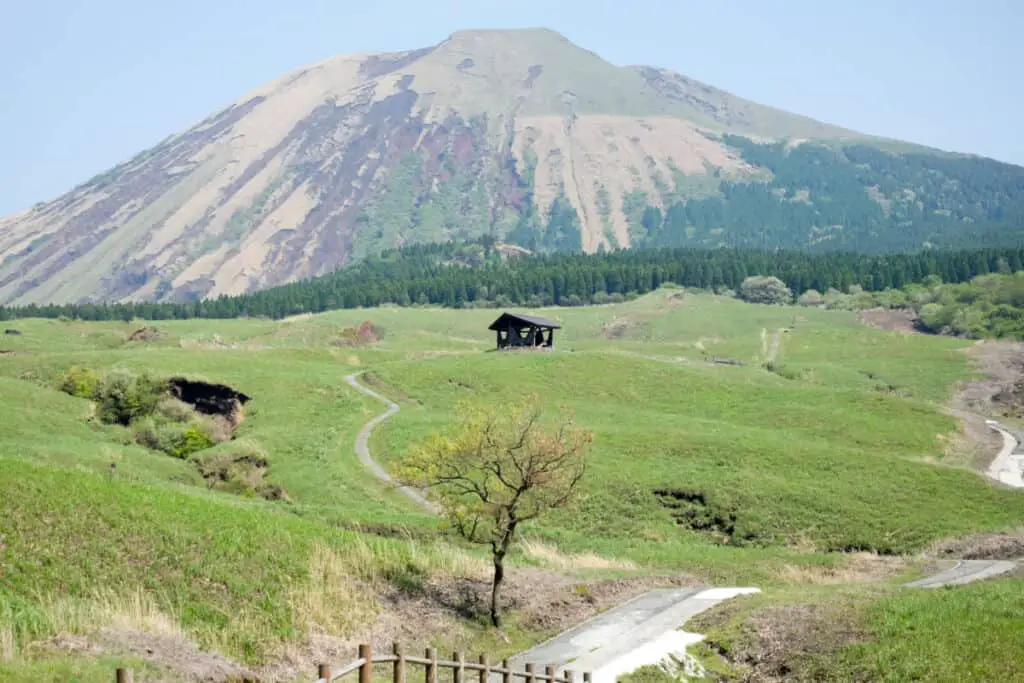
Walk the slopes of Komezuka
You don’t need to be a hiker to enjoy the walking trails of Mount Aso. The small volcanic cone of Komezuka is one of the more spectacular areas that you reach by foot.
But be careful, many of the trails are not accessible by public transport so make sure you have enough provisions to keep you safe for your time there.
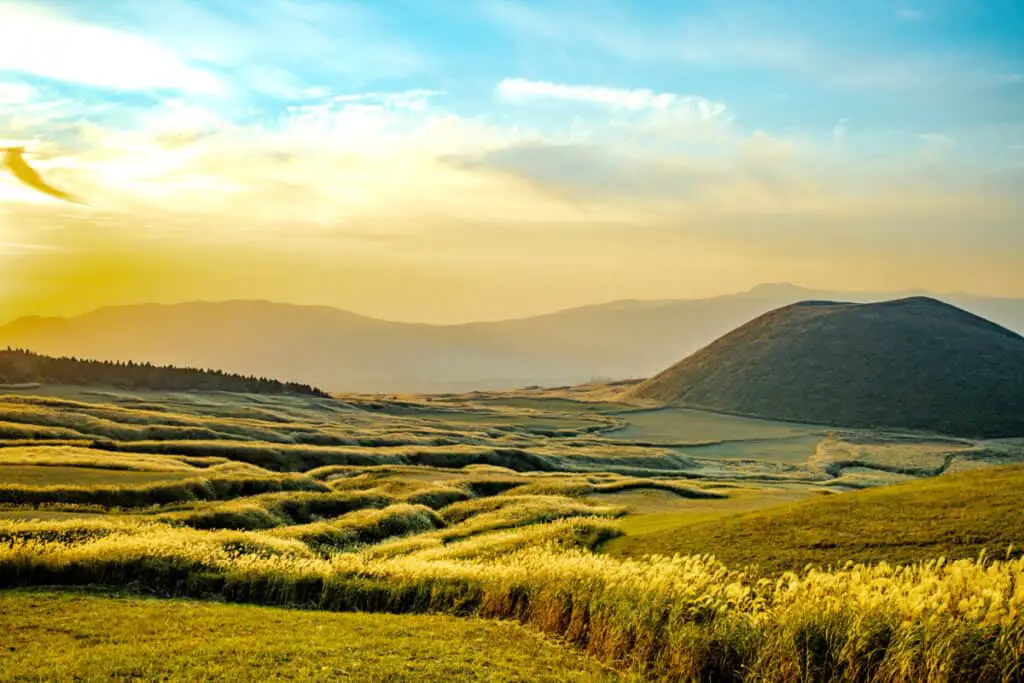
Camp on the slopes of an active volcano
There are several basic camping sites at the foot of the mountain which allow you to enjoy the volcano views throughout the day and night.
Marvel at the basalt and architectural beauty of the Tsujun-kyo bridge
The Tsujun-kyo bridge was built from basalt stone that was once erupted from Mount Aso. It was built in 1850 and is located in Yamato.
The bridge is actually an aqueduct arch that is 275.5 feet (84 meters) long, with an archway that spans a massive 89.5 feet (27.3 meters)!
Tsujun-kyo Bridge Official Website
It overlooks the Midorikawa River and the Japanese Agency of Cultural Affairs has designated it an Important Cultural Property for the people of Japan.

